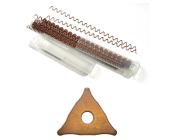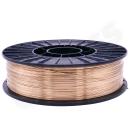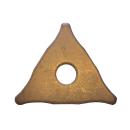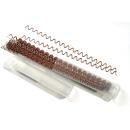Bodywork straightening

Bodywork straightening for cars and motorbikes
-
 BOBGALVA5Steel wire coil0.8 Galva - 5KG
BOBGALVA5Steel wire coil0.8 Galva - 5KG -
 ETC052239Nail-pulling starscopper-plated - pack of 20
ETC052239Nail-pulling starscopper-plated - pack of 20 -
 FO049727Corrugated wire kit50 strands - Diam 8 - Length 2
FO049727Corrugated wire kit50 strands - Diam 8 - Length 2
︾
Introduction to bodywork straightening tools:
Bodywork straightening work requires suitable tools to restore the original shape of affected metal panels. Among the tools commonly used, the steel wire spool, the nail-pulling star and the corrugated wire kit offer specific advantages for these repair tasks. Here's an overview of the advantages of each of these tools:
Steel wire coil :
Structural reinforcement:
The steel wire coil is used to reinforce damaged areas of the bodywork by attaching them to solid fixing points. This helps to restore the structural integrity of the metal panel.
Flexibility:
Steel wire is flexible enough to be shaped and adapted to the specific shape of the damaged area. This allows for a precise, close-fitting repair, essential for optimal results.
Durability:
Steel wire is known for its durability, offering a robust solution for reinforcing impacted areas. When correctly installed, it helps to maintain the structural stability of the bodywork.
Nail-pulling star:
Eliminating dents:
The nail-pull star is specifically designed to remove dents from the bodywork. It works by gently pulling the sheet metal back into its original shape, providing a precise method of straightening.
Paint preservation:
Using the nail-pull star minimises damage to existing paintwork, as it works primarily on the inside of the panel. This avoids the need to repaint the treated surface.
Versatility:
The nail-pulling star is adaptable to different dent sizes and can be used on a variety of body panels. This makes it a versatile tool for straightening in a variety of situations.
Corrugated wire kit:
Adaptable to shapes:
Corrugated wire, often used in combination with special pliers, is adapted to follow the complex contours of damaged areas. This enables more precise repair of bodywork deformations.
Repairing major damage:
Corrugated wire kits are particularly useful for dealing with more extensive damage, such as creases and severe deformations, offering an effective solution for straightening these critical areas.
Reduced working time:
By using corrugated wire, professionals can often reduce the time needed to straighten severe deformations, improving the efficiency of the repair process.
In conclusion, the steel wire reel, nail-pull star and corrugated wire kit are specialist tools that offer distinct advantages in the context of bodywork straightening work. The choice between these tools depends on the nature and extent of the damage to be repaired. An experienced professional will know how to choose and use these tools appropriately, depending on the specific needs of each project.
Frequently asked questions about the use of body straightening tools :
1. What tools are essential for bodywork straightening?
Essential tools include straightening pliers, inertia hammers, piles and straightening benches. Selection depends on the nature of the deformation to be corrected. Pulling pliers, nail-pulling stars and corrugated wire kits are also often used.
2. How do I choose the right tool for a specific deformation?
Selection depends on the size, shape and extent of the deformation. Straightening pliers are ideal for small deformations, while nail-pulling stars and corrugated wire kits are suitable for more extensive damage. Consult a professional for an accurate assessment.
3. What are the advantages of using an inertia hammer?
The inertia hammer is effective for straightening deformations without damaging the paint, as it uses vibrations to restore the shape without creating excessive stress. It is also useful for working on hard-to-reach areas.
4. How can I avoid damaging the paintwork during straightening?
Use specific tools such as the inertia hammer, which minimises damage to the paint by working mainly on the inside of the panels. Also protect the surrounding areas with appropriate coatings to avoid scratches.
5. Can body straightening tools be used on plastics or lightweight components?
Straightening tools are mainly designed for metal, but some, such as special pliers, can be adapted for plastics. It is important to adjust the pressure and choose the right tools to avoid damaging lighter materials.
6. What safety precautions should I take when using straightening tools?
Wear personal protective equipment, including safety goggles and gloves. Make sure the tool is used in accordance with the manufacturer's instructions. Work in a well-ventilated environment and use safety supports to hold vehicles in position.
7. How do you assess the severity of deformations before using straightening tools?
Careful assessment is crucial. Start with a visual inspection and use measuring tools to assess the deformation. If necessary, consult a bodywork professional for a thorough assessment.
In summary, the use of body straightening tools requires a thorough understanding of the specific deformations to be treated and the appropriate tools to use. If in doubt, it is advisable to consult a professional for specialist advice and precise intervention. Safety and precision are essential in this work to guarantee quality results.